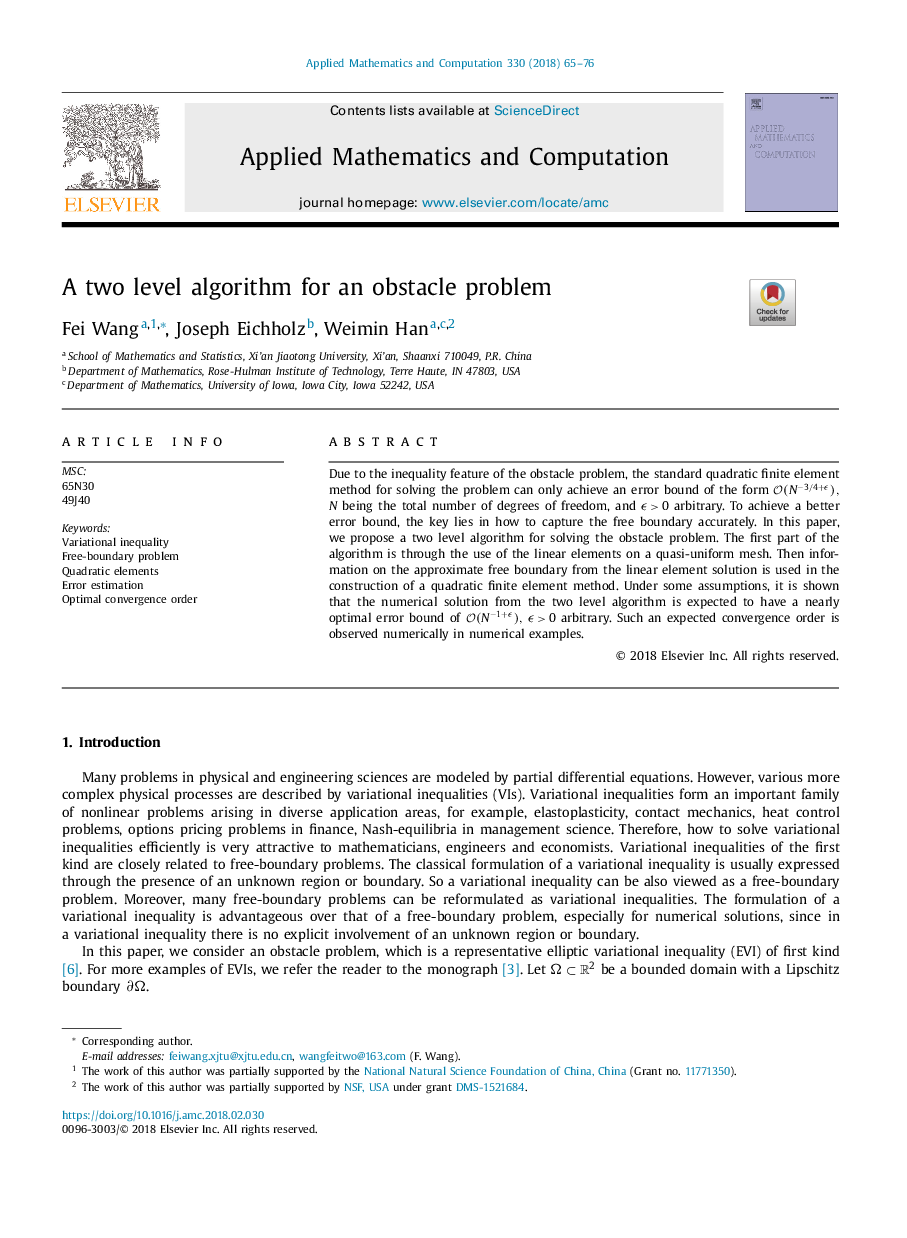| Article ID | Journal | Published Year | Pages | File Type |
|---|---|---|---|---|
| 8900988 | Applied Mathematics and Computation | 2018 | 12 Pages |
Abstract
Due to the inequality feature of the obstacle problem, the standard quadratic finite element method for solving the problem can only achieve an error bound of the form O(Nâ3/4+ϵ),N being the total number of degrees of freedom, and ϵâ¯>â¯0 arbitrary. To achieve a better error bound, the key lies in how to capture the free boundary accurately. In this paper, we propose a two level algorithm for solving the obstacle problem. The first part of the algorithm is through the use of the linear elements on a quasi-uniform mesh. Then information on the approximate free boundary from the linear element solution is used in the construction of a quadratic finite element method. Under some assumptions, it is shown that the numerical solution from the two level algorithm is expected to have a nearly optimal error bound of O(Nâ1+ϵ), ϵâ¯>â¯0 arbitrary. Such an expected convergence order is observed numerically in numerical examples.
Related Topics
Physical Sciences and Engineering
Mathematics
Applied Mathematics
Authors
Fei Wang, Joseph Eichholz, Weimin Han,
